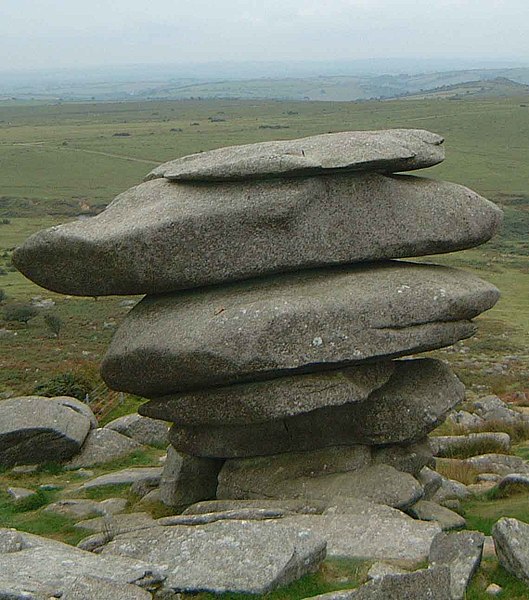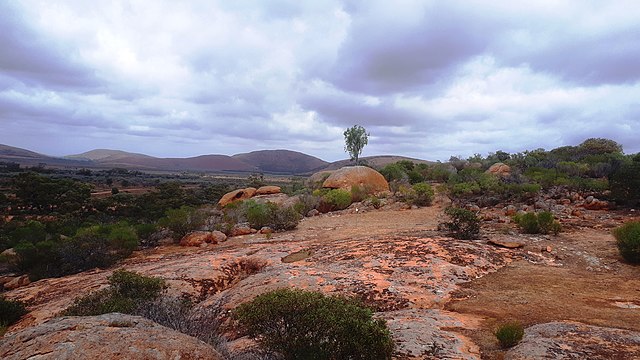Porphyry is any of various granites or igneous rocks with coarse-grained crystals such as feldspar or quartz dispersed in a fine-grained silicate-rich, generally aphanitic matrix or groundmass. In its non-geologic, traditional use, the term porphyry usually refers to the purple-red form of this stone, valued for its appearance, but other colours of decorative porphyry are also used such as "green", "black" and "grey".
"Imperial Porphyry" from the Red Sea Mountains of Egypt
A waterworn cobble of porphyry
Rhyolite porphyry from Colorado; scale bar in lower left is 1 cm (0.39 in)
The Tetrarchs, a porphyry sculpture sacked from the Byzantine Philadelphion palace in 1204, Treasury of St. Marks, Venice
Granite is a coarse-grained (phaneritic) intrusive igneous rock composed mostly of quartz, alkali feldspar, and plagioclase. It forms from magma with a high content of silica and alkali metal oxides that slowly cools and solidifies underground. It is common in the continental crust of Earth, where it is found in igneous intrusions. These range in size from dikes only a few centimeters across to batholiths exposed over hundreds of square kilometers.
Granite containing potassium feldspar, plagioclase feldspar, quartz, and biotite and/or amphibole
The Cheesewring, a granite tor in England
A granite peak at Huangshan, China
Pink granite at Hiltaba, South Australia (part of the Hiltaba Suite)








